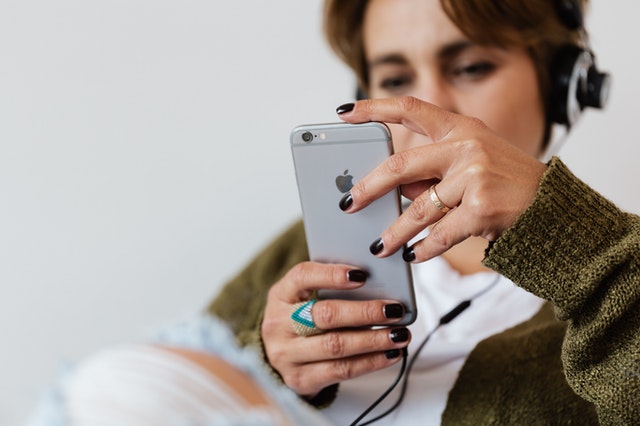Tinnitus masking is one of the first home remedies most people utilize when they experience ringing in their ears. Some audiologists may even prescribe it as part of your treatment. But is masking genuinely effective?
What is tinnitus masking?
Tinnitus masking uses an external sound to block out or partly cover the tinnitus sound. Unlike listening to an audiobook or music, masking typically uses specific white noises and tones.
How is tinnitus masking done?
Tinnitus masking is done in two steps: Matching and masking.
Step One: Matching. If done in a clinical setting, you’ll sit in a soundproof booth. Here you will compare your tinnitus to various sounds played in one ear by an audiologist. The goal is to match both the pitch and your perception (loudness) of your tinnitus.
Step Two: Masking. After matching, the audiologist will introduce white noise in the form of a humming or flowing sound into your ear. When the tinnitus has been blocked or drowned out, your tinnitus is effectively masked.
Insurance does not usually cover tinnitus masking, so many sufferers opt for a modified, home version of the matching step. Home matching is done by using a free online tool or simply playing various sounds on an app.
Once you have identified your masking sound, you simply play the sound in your ears whenever you need to.

How much do tinnitus masking devices cost?
A tinnitus masking app with various sounds and advanced features costs $5.99.
A tabletop masking device like the Bose Sound Oasis cost about $60.
In-ear white noise devices like the Bose Sleepbuds II, sell for $250.
Pillows equipped with white noise masking devices are available pillows themselves or as inserts.
White noise tinnitus masking is also a feature on some hearing aids.
Does masking tinnitus work?
In a clinical study conducted in 2017, over 60% of the tinnitus patients who underwent one month of tinnitus masking considered the treatment fully or partially useful.
These patients noticed a significant reduction in their tinnitus severity, frequency, discomfort, and duration. They also felt that tinnitus masking had relieved their overall pain with tinnitus.
The most significant benefit was reported by those who were young, had recently developed tinnitus, and suffered only moderate discomfort (limited severity, duration, and frequency).
As a result of this study, the following recommendations were made regarding tinnitus masking procedures:
- Tinnitus masking should be performed in a quiet environment.
- Sessions should be uninterrupted and last for at least 45 minutes.
- The masking should be done using earphones or headphones.
- When only one ear is affected by tinnitus, only the affected ear should be exposed to the masking sound.
Is safe to mask tinnitus with white noise?
In a 2018 paper titled “Unintended Consequences of White Noise Therapy for Tinnitus—Otolaryngology’s Cobra Effect: A Review,” some concerns were raised.
The paper’s authors concluded: “Noise exposure therapies offer a seductive short-term solution for relief but, in the long term, undermine the functional and structural integrity of the central auditory system and the brain more generally. Sound therapies using unstructured, random (“white”) noise should be avoided as a treatment for tinnitus. Alternative therapeutics that drive positive, adaptive plastic changes are discussed.”
Such a conclusion is shocking. White noise has been used since the ’70s and has helped reduce many of the emotional effects of tinnitus. Yet, fifty years later, we now learn that white noise may be as harmful to us as exposure to loud sounds.
While the paper has its detractors, and relies on three studies conducted upon rats, it might be safer to trade masking for distraction and other coping skills. At least for the time being.
Related: https://lifewithtinnitus.com/heres-how-to-get-better-from-tinnitus/
